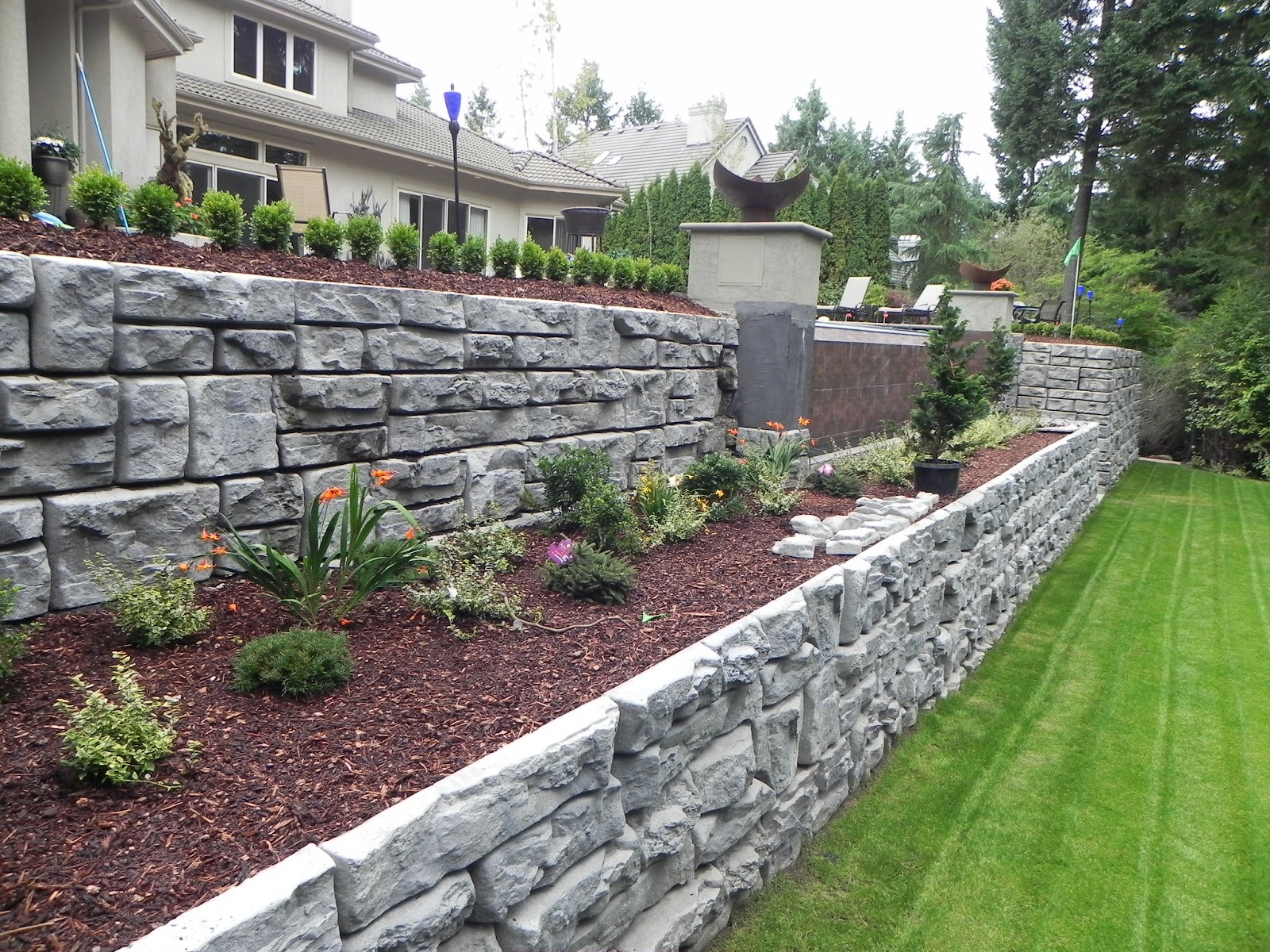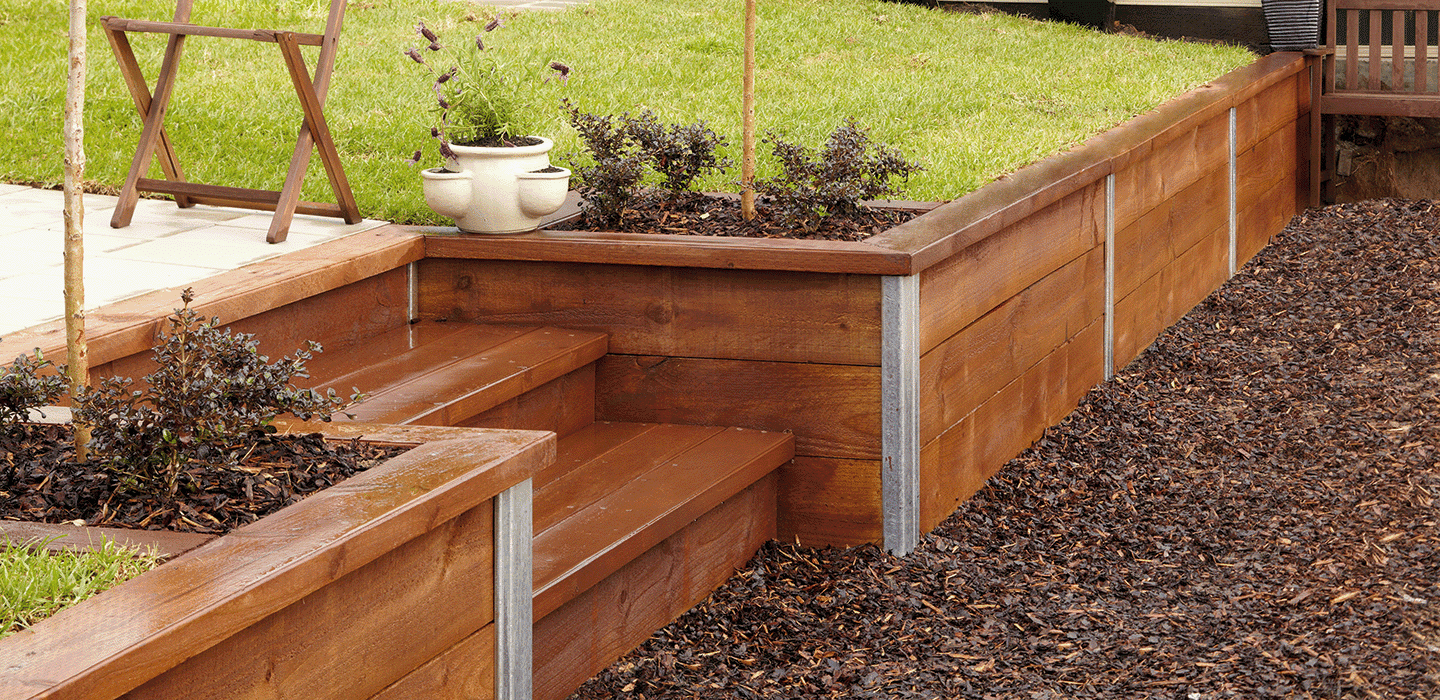Change Your Exterior Room with Exquisite Retaining Walls Sunshine Coast
Change Your Exterior Room with Exquisite Retaining Walls Sunshine Coast
Blog Article
Enhancing Residential Property Security: The Role of Retaining Walls in Soil Retention and Disintegration Control
Retaining wall surfaces stand as quiet guardians, playing a crucial function in soil retention and disintegration control. By checking out the subtleties of various types, layout considerations, building methods, and maintenance tips linked with maintaining walls, a deeper understanding of their critical function in improving residential or commercial property security emerges.
Value of Retaining Walls in Stability
Retaining walls play an essential duty in holding back soil, avoiding erosion, and producing level surfaces in sloped locations. By supplying structural support, keeping wall surfaces aid to rearrange side pressure triggered by dirt, protecting against landslides and slippage.
Maintaining wall surfaces are specifically essential in irregular or uneven surfaces where dirt erosion is a common incident. Without appropriate assistance, soil disintegration can result in the deterioration of landscapes, endangering the stability of frameworks and posing dangers to occupants. Maintaining wall surfaces function as obstacles, supporting the soil and avoiding it from changing downhill during heavy rainfall or various other environmental stress factors.
Additionally, preserving wall surfaces supply lasting benefits by lowering upkeep expenses related to soil disintegration and land instability. By buying well-designed maintaining walls, homeowner can guarantee the durability and sustainability of their landscapes while advertising a aesthetically appealing and risk-free environment.

Sorts Of Retaining Walls for Erosion Control
Gravity retaining walls are sturdy structures that rely on their weight to stand up to the pressure of the soil behind them. Cantilever maintaining wall surfaces, on the other hand, are made with a thicker base and make use of a bar arm to stand up to the dirt stress.
For taller wall surfaces or where room is a restraint, anchored preserving wall surfaces are often used. These walls use cables or strips that are secured into the soil or rock behind the wall surface to supply extra support. Another kind, the sheet stack maintaining wall, is ideal for areas with soft soil. Retaining Walls Sunshine Coast. These wall surfaces contain interlocking sheets that are driven into the ground to produce a barrier against soil disintegration. When picking the suitable sort of maintaining wall surface for disintegration control, factors such as soil composition, wall surface elevation, and website conditions need to be carefully thought about to ensure long-lasting security and effectiveness.
Layout Factors To Consider for Soil Retention
The height and location of the maintaining wall surface are vital factors that influence the total design. Designers should likewise consider the stress applied by the retained dirt and possible lateral lots to ensure the framework's stability over time.
Moreover, the material selection for the keeping wall is critical in boosting longevity and capability. Concrete, wood, gabion baskets, and natural rock are typical materials used in retaining wall surface building and construction, each with its unique advantages and considerations. Proper drainage systems, such as weep openings and French drains pipes, ought to be incorporated into the style to stop water accumulation behind the wall, which can lead to architectural failing and disintegration.
Building Techniques for Retaining Walls
When carrying out design considerations for effective soil retention, the building and construction strategies for preserving wall surfaces play a crucial duty in making sure architectural stability and long-term stability. One typical strategy is the gravity wall, which depends on the weight and mass of the wall surface itself to resist the stress of the maintained dirt.
Another commonly used building and construction technique is the cantilevered visit wall, which uses a concrete slab foundation that expands backwards into the kept soil. This design gives extra stability and appropriates for tool to high retaining walls. For taller frameworks, strengthened soil techniques such as the use of geogrids or soil nails can be utilized to enhance the wall's strength and stability.

Upkeep Tips for Residential Property Security
To ensure lasting residential property security, routine maintenance practices are crucial for maintaining the honesty of avoiding and keeping wall surfaces erosion issues. Cleansing the surface area of the keeping walls can also aid keep their architectural integrity by getting rid of dirt, particles, and greenery that can deteriorate the wall surface over time.
In addition to visual evaluations and cleansing, it is necessary to inspect the drain systems associated with the retaining walls. Making sure that drains pipes are free from obstructions and operating appropriately can avoid water buildup behind the walls, which can bring about stress and potential failing. Properly operating drainage systems are crucial for taking care of water flow and lowering the risk of erosion.
Regularly keeping and monitoring preserving wall surfaces according to these pointers can extend their life expectancy and add to the total stability of the property.
Verdict
In conclusion, keeping wall surfaces play an essential function in boosting residential property see this site stability by avoiding soil erosion and preserving dirt in area. Routine upkeep of preserving wall surfaces is important to make certain long-lasting security and protection versus erosion.
For taller walls or where space is a restraint, anchored keeping wall surfaces are often utilized. These walls use cables or strips that are anchored into the dirt or rock behind the wall to provide added support. When selecting the suitable type of maintaining wall for disintegration control, aspects such as dirt make-up, wall surface elevation, and site conditions should be carefully considered to guarantee durable security and effectiveness.
One typical strategy is the gravity wall, which depends on the weight and mass of the wall itself to resist the stress of the preserved soil. Cleansing the surface of the keeping wall surfaces can click here for more additionally help preserve their architectural stability by getting rid of dirt, debris, and plant life that can compromise the wall surface over time.
Report this page